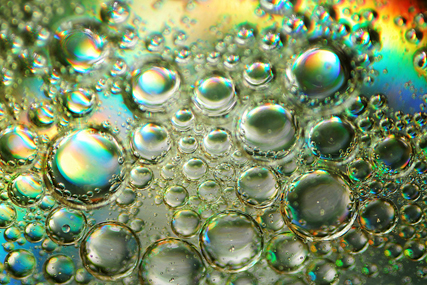
Grade 10 | Lesson 4
Dean of Students: dean@theschools.com
Tech Services: tech@theschools.com

Grade 10 | Lesson 4
Dean of Students: dean@theschools.com
Tech Services: tech@theschools.com
Science
Lesson Overview
Water and Mixtures
• Water
• Mixtures
You're a Scientist
![]()
Water and Mixtures
Now that you've now got a basic understanding of the the building blocks of life on Earth, it's time to look at a few concepts that are still very fundamental, but are layered on top of, formed by and the result of of the molecules and particles on the atomic level. Whether it was here with Trent or with another institution, in your past studies of the physical and Earth sciences, you learned a great deal about water's importance to shaping our planet. Not surprisingly, water is also vital for the growth of life on our planet. In this lesson you'll learn about mixtures which are don't necessarily require the presence of water but usually do. Before looking at these, here's just a quick re-examination of water in the context of biology.
Water
Water is one of the most unusual molecules on Earth, with physical and chemical properties that are completely unique. It not only covered more than 75 percent of the Earth's surface, but it is the most abundant compound in nearly all living organisms. The most important property of the water molecule is that due to an uneven distribution of electrons, it is slightly charged on each end. In this way, each water molecule is like a little magnet, with one pole near the nucleus of the oxygen atom and the other pole near the nuclei of the two hydrogen atoms. This polarity produces a strong attraction between individual water molecules and between water molecules and other charged molecules. This should give an insight into why water has some of the properties that it does.
Mixtures
The slight charges of water molecules make them particularly good at forming mixtures. A mixture is a substance composed of two or more elements or compounds that are mixed together but not chemically combined. Salt and pepper stirred together constitute a mixture. So do sugar and sand. Unlike chemical compounds, the substances that make up mixtures can be added in varying amounts and are not linked by chemical bonds.
Earth's atmosphere is a mixture of gases; soil is a mixture of individual solid particles; and living things are in part composed of mixtures involving water. The mixtures that are made with water can be of two important types: solutions and suspensions.
Solutions
If a cube of sugar is placed in a glass of warm water, the movement of the water molecules gradually breaks off single molecules from the sugar cube. These sugar molecules then become dispersed in the water and the sugar dissolves. Before long, the sugar cube has completely disappeared and the sugar molecules are uniformly spread throughout the water: this is a solution. The sweet taste of the solution tells us that the sugar is still there. The sugar has undergone a physical but not a chemical change in forming a solution with water.
You've certainly made solutions of water and many other materials, such as sugar, salt, tea, and cocoa. In these solutions, water is the solvent, or substance that does the dissolving. The substance that is dissolved - salt or tea, for example - is the solute. All solutions consist of a solvent and a solute. As you might expect, water is the most prevalent and widely used solvent in the world.
Suspensions
Some materials do not break into individual molecules when they are placed in water but still form pieces so small that they will not settle to the bottom of a container. The movement of water molecules keeps these small particles suspended. Such mixtures of water and non dissolved material are known as suspensions.
In living things, both solutions and suspensions are very important. A perfect example is the blood that circulates through your body. Blood, as you might have guessed, is mostly water. In that water area many dissolved compounds, including salt. So blood is a solution. But blood is also a suspension. It contains tiny structures that aid in clotting, as well as living cells and other suspended particles. These components do not dissolve in blood. Instead, they form a suspension that circulates through the body - an extremely vital suspension made possible by the most important molecule found in living things: water. One of the more common suspensions is the mixture of oil and water.
![]()
You're a Scientist
You're a Scientist - Mixtures, Solutions and Suspensions